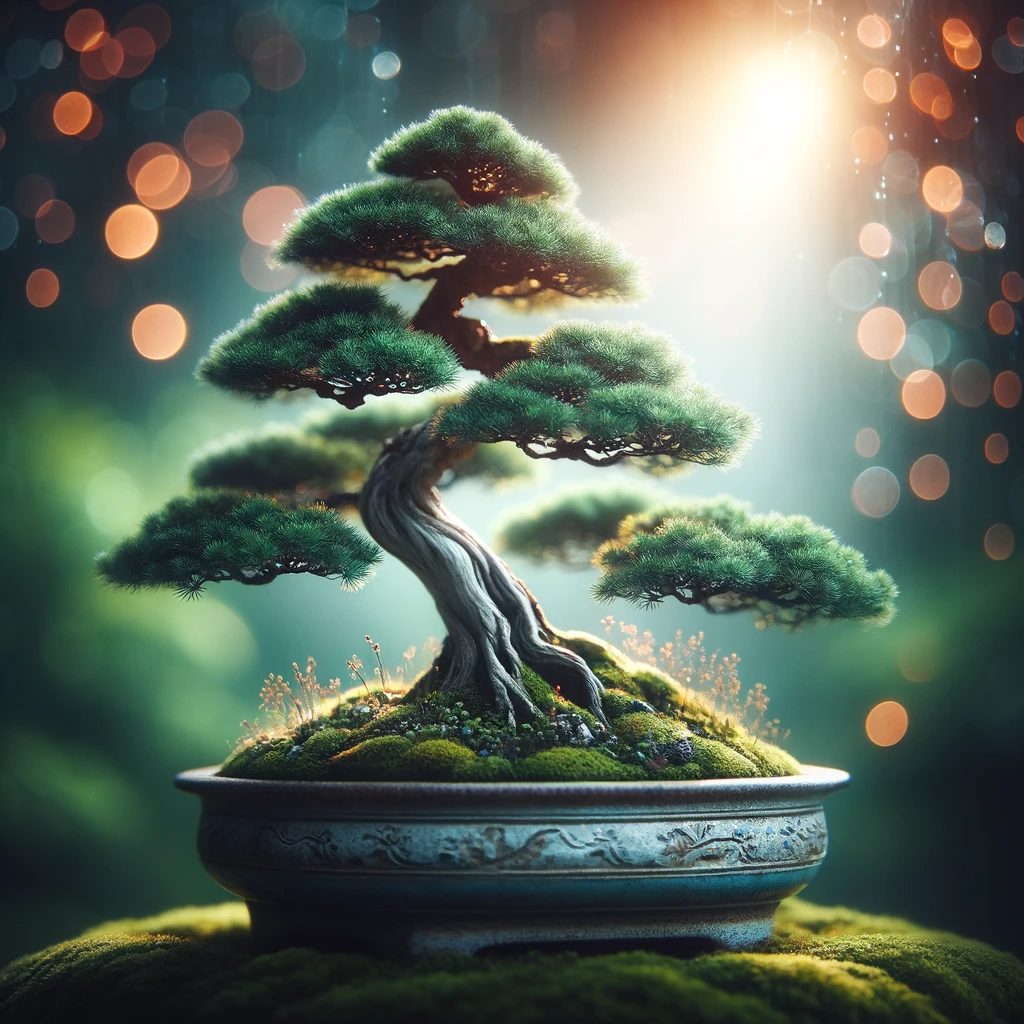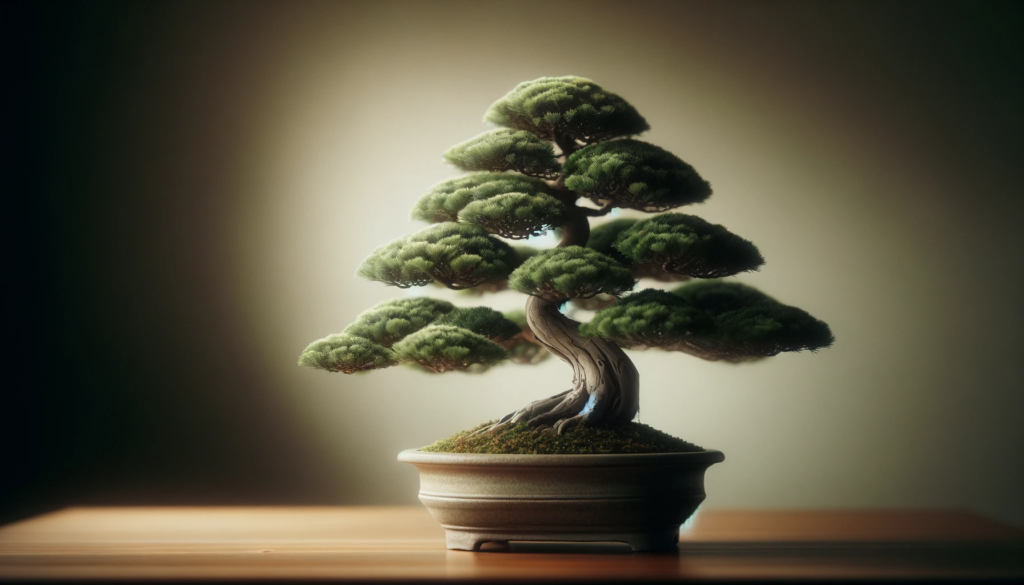
Welcome to the magical world of bonsai, where intricate miniaturized trees become living art and meditation anchors. As an ancient practice turned global phenomenon, bonsai tree cultivation intrigues enthusiasts worldwide with its blend of horticultural mastery and patient aesthetic vision.
This comprehensive yet friendly guide unravels bonsai design for newcomers while honoring its millennia-old traditions. We’ll journey across spiritual origins, stylistic varieties, practical caretaking and more to convey why this art form captivates and calms so profoundly.
So whether you seek a new hobby, thoughtful gift or oasis of green grandeur, let’s bonsai!
Why Choose Bonsai as an Artistic Pursuit?

Beyond superficial prettiness, what makes manipulating small trees so captivating across cultures?
Attuning with Nature
By working intimately with living specimens relying on our care, bonsai practitioners meaningfully reconnect with the natural world. Watching trees transform slowly over seasons and years reinstills awe at the everyday miracle of growth we often overlook.
Meditative Focus
The meticulous patience bonsai requires redirects attention from life’s everyday buzzing distractions onto processes unfolding steadily before us. The art form epitomizes living in each gradual moment.
Creative Outlet
Guiding tiny trees along desired shapes and styles satisfies our innate primal urge to shape living things while unleashing personal vision. We co-create lovely new entities that couldn’t exist naturally.
Cultural Connection
For many, particularly Asian Americans, bonsai offers intimate avenues into heritage and ancestors who cultivated the art form. Displaying bonsai publicly also sparks profound cultural exchanges.
So bonsai offers multifaceted rewards. Now that we’ve touched on significance beyond the surface, let’s delve into specifics on this slow art.
History & Origins of Bonsai
Bonsai as a conceptual practice of growing miniature trees in containers for contemplation and admiration traces back over a thousand years to China. Scholars believe early versions originated among Buddhist monks and imperial gardeners.
The approach reflected Taoist philosophical ideals of finding vastness in what seems mundane or diminutive. These lush microcosms channeled the majesty of entire landscapes. Natural dwarfed trees also inspired scaled replica crafting to manifest this phenomena intentionally.
Over time practices spread becoming:
- “Penjing’’ in China – integrating stylized miniature trees with ornate rocks, water features, structures and figurines in lavish tray gardens
- “Hòn non bộ” in Vietnam – emphasized native trees like Ficus
- “Bonsai” in Japan – adopting Chinese penjing traditions by Heian period along with favorable native species like junipers, pines and maples
The Japanese likely coined the term “bonsai” meaning “tree in a pot” which became the commonly utilized phrasing. Through Japan global interest intensified, with cross-cultural pollination continuously advancing techniques and aesthetic styles.
Now treasured internationally, bonsai retains profound heritage significance and trailing transcendent wonder carrying forward over generations.
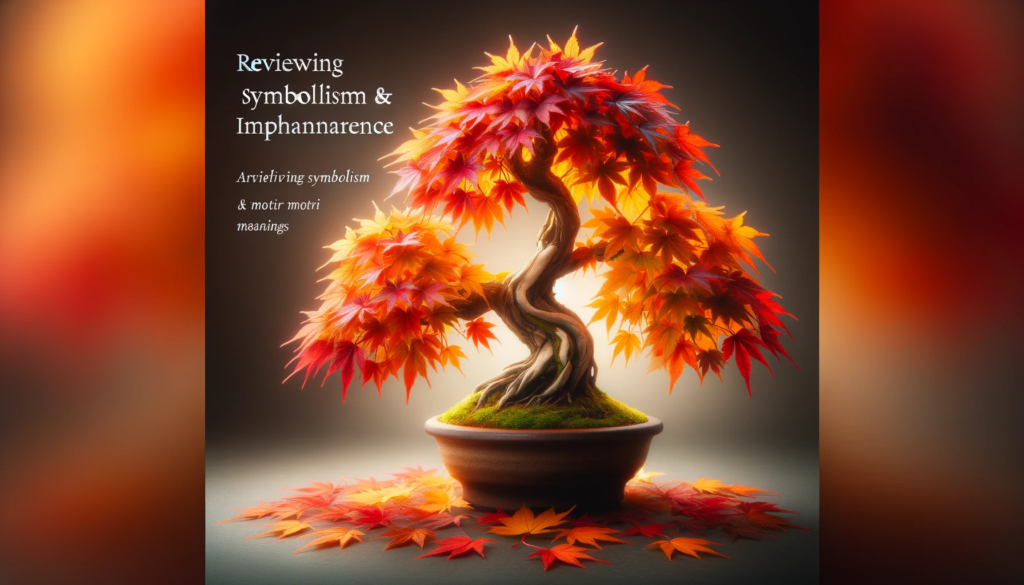
Reviewing Symbolism & Motif Meanings
Beyond botanic technique, bonsai frequently integrates rich layers of philosophic symbolism through deliberate design motifs. Key reflective themes include:
Mortality & Impermanence – Just as our human lives follow a temporary arc between birth and death, the finite span and fragility of bonsai trees echo life’s fleeting essence. Artists highlight this poignancy through autumnal color choices.
Resilience & Adaptability – Even delicate plants cling stubbornly to survival against drought, insects and injury. Bonsai displaying recovery from major pruning or periods of neglect underpin the tenacity and determination necessary for enduring existence despite surrounding fluctuations.
Interconnectedness – Visually alluding to environmental factors affecting the tree through accent plants, sculpted windswept shapes and feeding wildlife sculptures emphasizes the interconnected dependency binding all lifeforms.
Balance & Harmony – Structural balances like perfectly triangular pads visually encapsulate symbolic harmony. Gardeners intricately shape progression to avoid jarring disproportion. This mirrors many Asian philosophies urging gentle equilibrium and virtue.
Whether interpreting bonsai motifs through cultural memes or purely appreciating abstract beauty intuitively, the rich strands of meaning woven subtly into compositions reward inspection. Now we’ll survey they key aesthetic categories guiding all those artistic expressions.
Overview of Main Bonsai Styles
While individual vision always crafts variation, several classic bonsai aesthetic styles broadly categorize approaches. These include:
Upright – Tree appears straight and tall, triangular branches evenly spaced along vertical trunk
Informal Upright – Upward growing tilted trunk looks more naturally random in shape
Slanting – Thick trunk sticks out at approximately 45 degree slope angle
Cascade – Trunk or branches arch steeply downwards like a waterfall
Semi-cascade – More gradual downward bent slope than full cascade
Windswept – Trunk twists sideways as if blown by strong winds
Literati – Thin often bare trunk reaches impressively tall conveying age despite small size
Raft – Group of tree trunks clamped together into floating pad or mat shape
Rock planting – Roots appear to grip cracks and crevices emerging from stone faces
And myriad other named varieties reference specific tree cultures like the warped black pine shapes of Japanese “ sharimiki” bonsai. Knowing style names helps guide aspirations.
Selecting Suitable Tree Species
Beyond stylistic decisions, tree species selection hugely impacts outcomes for novices. Optimal trees share common cultivation traits like:
- Small leaves – Large leaves overwhelm petite projects
- Coppicing capacity – Readily regrows new shoots after major chopping
- Shallow rooting – Thrives without extensive soil to enhance miniaturization
- Modest mature height – Allows condensing growth habit
- Interesting bark – Adds intriguing texture against green
- Adaptability – Withstands extremes of heat, moisture and pruning
Common beginner-friendly trees include:
- Juniper – Conifers like this adapt well to pots with interesting textures
- Chinese Elm – Fast growing with lovely exfoliating bark
- Ficus – Lush tropical figs cascade beautifully
- Azalea – Cheerful spring blooms, great starter
- Maple – Japanese ones best with red fall foliage
See what native species or nursery offerings suit your zone. Now we’ll review shaping techniques propelling those raw materials into refined art.
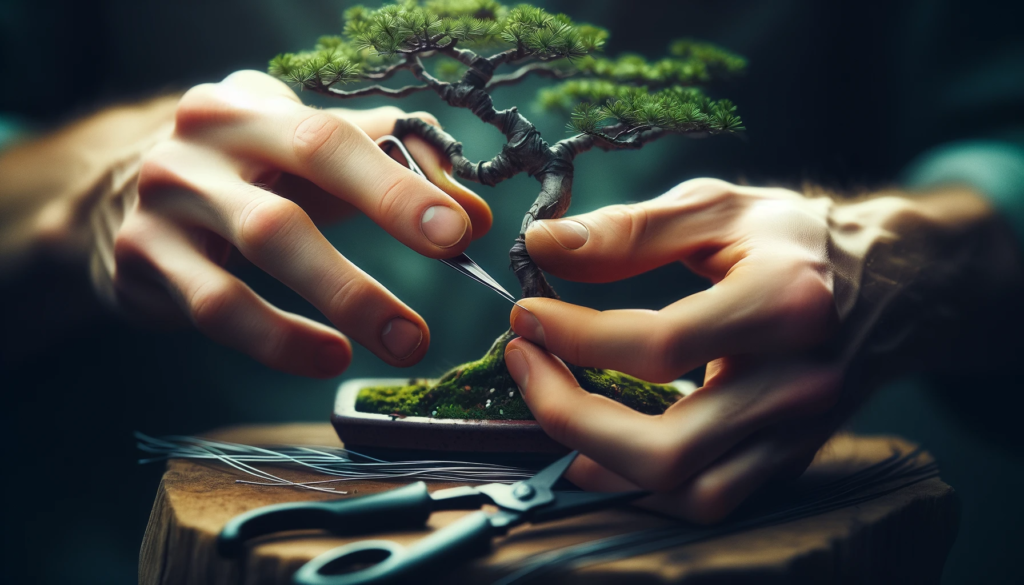
Mastering Design Techniques
Arranging raw materials into refined living sculptures involves various manipulation techniques. Crucial skills include:
Wiring – Copper wire wrapped along branches allows manually bending and directing angles as they expand
Pruning – Strategic branch and root trimming controls growth patterns
Defoliation – Selective leaf removal areas starkly emphasizes branch sculpting
Grafting – Merging different plant stem types combines desired traits
Selective positioning – Optimizing sun exposure guides transformations
Soil conditioning – Improving drainage and nutrients facilitates thriving
Pot choice – Vessel size, shape and color enhances composition
Initially focus on basics like wiring branches for positioning, pruning for compacting and pot selection for structural dynamics. Over seasons of hands-on practice, advanced methods will organically emerge. Now let’s discuss ongoing cultivation care.
Caring for Your Bonsai Creations
Keep bonsai thriving through attentive care balancing trees’ needs with intentional miniaturization, including:
Watering – Soil stays moderately moist but not constantly saturated or bone dry. Blasts followed by full drying nurtures extensive roots seeking moisture. Consider humidity.
Sunlight – Most desire several hours of direct sun daily, with shelter from harsh afternoon rays. Observe foliage reactions.
Fertilizing – Use half strength doses of balanced fertilizer during growing seasons for boosted nutrition without overwhelming plants
Pruning – Trimming new shoots maintains petite sizes and ideal pad shapes per seasonal cycles
Re-potting – Every 2-4 years shift root balls into slightly larger pots to refresh soil without outpacing intentioned dwarfening
Insect management – Monitor for pests like spider mites or aphids, treat quickly upon any emergence
Inclement weather protection – Shelter potted plants from harsh rain, winds and temperature extremes threatening roots and breaking branches
Consistent bonsai care ensures your creations thrive for years as enduring zen companions! Now for a summary of core concepts before we answer common questions.

Key Bonsai Design Takeaways
- Originating in China and then Japan, bonsai is an ancient art using miniature trees to express balance and contemplation
- Classic bonsai styles guide structured aesthetics but leave room for individual variation
- Choosing small-leafed tree species suited for containers sets up success
- Wiring, pruni,ng and training techniques shape raw plants into refined sculptures
- Patience matters more than perfection – trees evolve gradually ovethe r years through attentive care
- Integrate bonsai visually or spiritually into spaces seeking tranquil focus
For more FAQs expanding beginner knowledge, read on!
Frequently Asked Bonsai Questions
Let’s resolve some common conundrums encountered when launching your bonsai journey!
Is bonsai cultivation complicated for beginners?
Bonsai seems complex but fundamentals are accessible for novices. Focus on wiring branches for positioning, pruning for shaping, and keeping trees consistently watered and fed. Mastering the basics gradually through enjoying the process surpasses stressing perfection. And there are no limits on supplies or space – even one tiny nursery tree on a city balcony makes lovely bonsai!
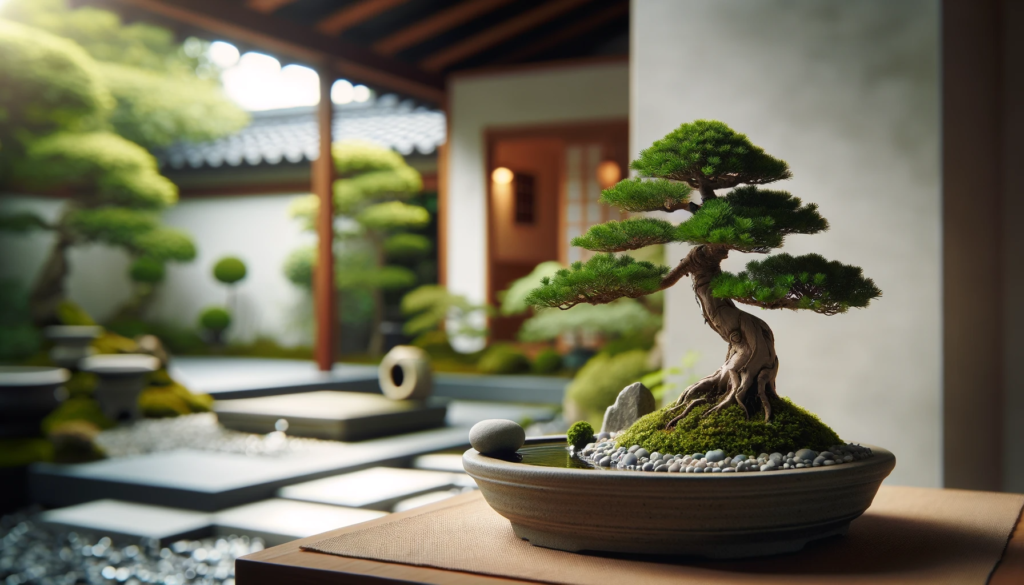
How can I meaningfully incorporate bonsai into my living space?
Maximize feng shui or zen tranquility by placing bonsai near seating areas, desks, or bedsides so their serene presence can be absorbed through stolen glances—group assorted-sized compositions for intriguing impact along architectural edges for a natural yet structured effect. For spiritual connections, situate near related focal points like meditation corners, ancestral altars, or old family photos kindling inspiration.
What common mistakes lead to dead bonsai trees?
Overwatering suffocates roots leading to sudden collapse, so err on the side of underwatering and blast trees fully on occasion. Letting sunlight, fertilization, or wiring needs lapse slows incremental decline. And sudden severe chopping without following species-specific pruning guidance shock systems. Patience and attentiveness prevent problems.
How extensively can I prune/shape branches without damaging trees?
Most healthy bonsai tolerate extensive pruning – cutting back even 50-75% annually keeps plants compact and continually renewed. But research species specifics, allowing subsequent shoots to extend slightly farther before the next round of shaping for realistic effects. Focus pruning on wire-trained branches mainly. Go slowly over years without removing everything simultaneously ever.
What are the best local tree species for beginner bonsai in my area?
Consult regional plant hardiness zone guides, native species lists, bonsai club advice, and local nursery inventory to select trees evolved to thrive in your microclimate without coddling. Favor small leaves, appealing bark, and resilience. Great starter options appear earlier but explore your habitat for inspiration!
Can bonsai stay lovely indoors or must they live outdoors?
Most true bonsai require seasonal shifts between indoor and outdoor environments to mimic natural humidity, dormancy, and temperature fluctuations needed for continual health. However, some tropical and sub-tropical choices tolerate stabilized indoor atmospheres nicely. Focus on native plants rather than attempting delicate Japanese specimens unless you live in certain concentrated zones.
We hope these tips empower your bonsai adventures! Feel free to reach out with any other questions not covered here today.
Additional Bonsai Inspiration
May your bonsai journey overflow with wonder and deep purpose as you co-create alongside nature’s marvels!
